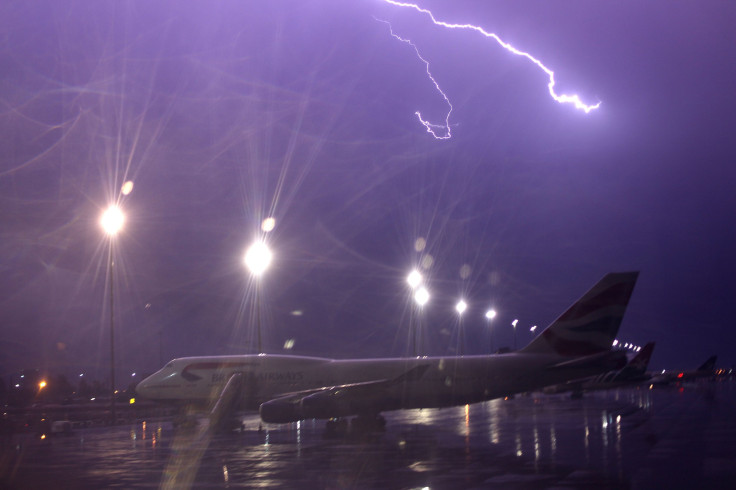MIT Develops Tech For Aircraft To Avoid Lightning Strikes, Make Aviation Safer

Researchers at the Massachusetts Institute of Technology (MIT) have proposed a novel system that could save passenger as well as military planes from lightning strikes.
A strong lightning jolt can immediately damage the outer structure as well as electrical systems onboard an aircraft. Pilots usually tend to avoid this problem by opting for a safer route, but researchers at MIT think charging a plane could be the way to deal with it.
It is estimated that every commercial aircraft is hit by lightning at least once a year. Of these, nearly 10% of the strikes occur naturally, while the rest are triggered from the aircraft itself — a situation where its exterior acts as an electrically conductive lightning rod which leverages stormy regions to generate strikes.
An imbalance in the external electrical state of the aircraft results in such strikes. More specifically, while passing through thunderstorms or an electrically charged environment, the aircraft starts polarizing, with one end gaining positive charge and other becoming more negatively charged. This sets off a highly conductive flow of plasma, ultimately leading to the lightning strike.
However, if this imbalance is restored, aircraft-triggered lightning strikes could be prevented, the researchers said while suggesting an automated control system that could electrically charge the plane to a negative level and negate the effect of the more highly charged positive end.
As part of a study sponsored by Boeing, the group used a working model to show how the system, outfitted on an aircraft, would use sensors and actuators to detect plasma flow and generate current to charge the plane to the required level.
“Numerically, one can see that if you could implement this charge strategy, you would have a significant reduction in the incidents of lightning strikes,” Manuel Martinez-Sanchez, one of the members of the team, said in a release.
The passengers sitting inside will also stay safe as the power levels required for the charge would be lower than what is required for a simple bulb. Plus, aircraft cabins are very well insulated from the external electrical activity, Martinez-Sanchez added.
“We’re trying to make the aircraft as invisible to lightning as possible,” Jaime Peraire, head of MIT’s Department of Aeronautics and Astronautics, said in a statement.
That said, bringing the system to life is still a question, at least as of now. The researchers are currently testing it on a metallic sphere in a wind tunnel and plan to make further improvements by expanding to more realistic situations like by flying drones into thunderstorms. This would include bringing down the response time of the system from a fraction of a second to even less.
The work was published in the American Institute of Aeronautics and Astronautics Journal.
© Copyright IBTimes 2024. All rights reserved.





















